On the north side of Branchville near the top of New Jersey is a 15,482-acre playground known as Stokes State Forest. It's mountains of gorgeous woods and clean water, and it's mountains of fun. There are trails to walk, birds to find, wildflowers to learn, fish to catch, wildlife to spot, photos to shoot, grass to lie in by the Big Flatbrook, sites to camp and if you're lucky, a cabin to rent. There are ravines to trek, views to be awed by, boulders to hop, fires for hot dogs, and a lake to swim. There's even a school.
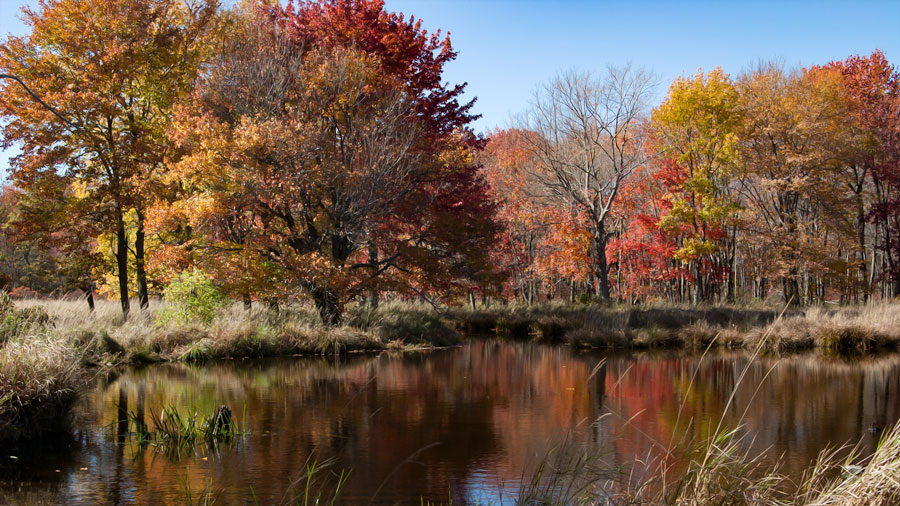
One windy morn after a day of heavy rain my friend, Kathy, and I park at the Tinsley Trail on Sunrise Mountain Road and cross the road for a walk on the Kittatinny Geological Trail to engage in a bit of learning. The forest is lovely here. Mountain laurel and witch hazel float through the understory of this open section, and what looks like low bush blueberry covers the ground.
The Tinsley Trail is wide, easily negotiable and a little rocky. To take the geology trail, we step down the rock slabs and follow the blue triangle blaze, surrounded by lots of black birch, chestnut oak and pretty bird songs. Here on the westward side of the mountain, the wind rustles the canopy. Tiny sea foam-colored leafy structures cover tree trunks. Carpets of moss and rocks sporting lichens, and flat, rubbery brown things on boulders, maybe liverworts, decorate the woods. The path follows gentle contours of dips and rises.
Numbered posts along the trail correspond to a map you can pick up in the park office. It explains geological phenomena that define the history and landscape of Stokes (and the rest of the Skylands), with examples along the way. There are numerous small ponds--kettle holes left by the Wisconsin glacier 10,000 years ago--edged with sphagnum moss and animal tracks. Another rocky ledge, and soon we're at a glacial moraine--a long field crammed with huge, rounded boulders tumbled by the glacier. It's a fun walk across the boulders. Back in the woods, there are many narrow paths off the trail, probably critter paths, and as Kathy says, maybe leading to the Animal Quick-Check. There are skinless trees; the bark lies in piles at their bases. What could cause this instant undress?
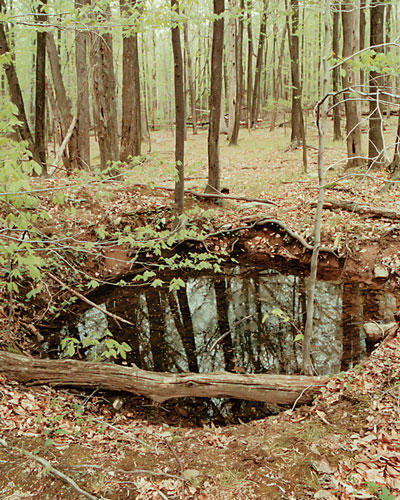
This is a big kettle hole at post number 7. The forest smells so sweet. Beware the solitary red sandstone slab in the walkway; it's probably a human erratic. Soon the trail becomes part of the Tinsley and heads back up to the road. The talus slope on the right is covered with hard-edged rocks that have cracked their way down hill--different from the boulder field. There's a lot of yellow birch around with peeling strips of shiny skin and roots clawing in the thin soil. The Geological Trail is easy if you take it slow and watch for rocks and snake holes.
One needn't get out of the car for a half-day tour of the forest. Take Route 206 North above Culver Lake and turn right onto Rt. 636 and make the first left to Sunrise Mountain that runs along the Kittatinny Ridge. Trails go off to the sides with either a lazy pace downhill, or a steep climb up to the ridge top where they join the Appalachian Trail on its 12.5-mile journey through the forest. My guide this day is Len Frank, who's been hiking these hills for forty years. He says these trails are nice because they're not used much.
Along the road, old trees stand with their branches bent and broken by Indians and early settlers to make boundary marks, like the huge white oak with moss all over its limb on the left. Old deeds officially referred to these trees as property borders.
At the overlook, see the Delaware Valley roll to the ridges of PA. Once a plateau, the softer rock has long eroded over time unimaginable, leaving the harder ridges.
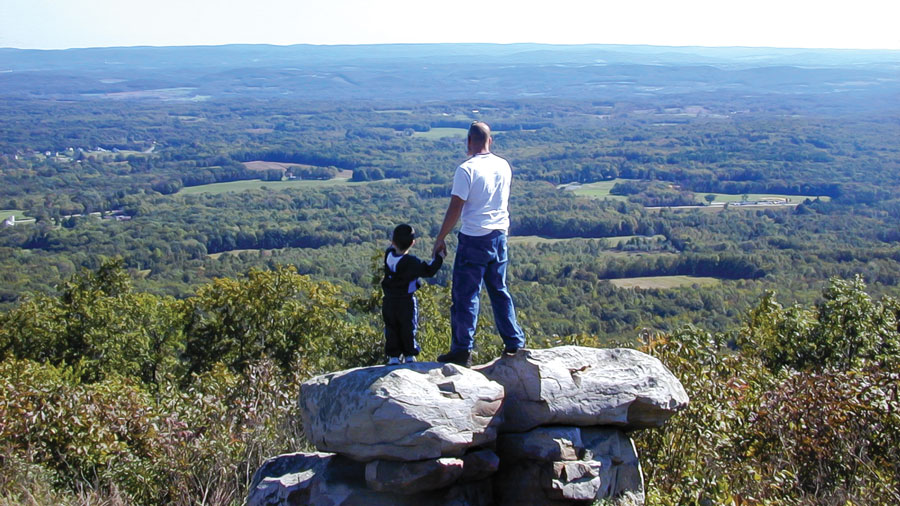
The top of Sunrise Mountain, 1,653 feet above sea level, is a hop away. Enjoy the view of the Sussex County landscape--verdant, soft green surfaces dotted with people's homes. Have a picnic on the big flat boulders along the AT and watch soaring vultures and hawks. In late August and early September, birders flock here to see the biggest diversity of birds in a very short period of time, says Dick Wilson, birder. "And the neat thing about Sunrise Mountain is that you have access both east and west, as well as north and south, so you have a good view. And on a clear day you can see forever, and you never know what's going to go by. Different species of hawks fly through at different times. Eagles, swarms of monarchs, hummingbirds...when everything's flying, you never know what kind of day it will be."
On the way down, skunk cabbage crowds the wetlands. Len says that Indians ate the new leaves and they're edible if you parboil them twice to get the toxins out. At the small bridge, on the right, check out the one-toothed stumps left by beavers. Some wild violets and geraniums grow there and Len tells me of violet sandwiches. I eat a bunch, and discover one of the freshest tastes I've ever had.
A good spot for base camp is the Steam Mill Campsite, right by the Parker Brook and the Big Flatbrook. You can hike the Parker Trail to High Point from here, or take a few of the more than 33 miles of trails that traverse the forest, some heading up to quieter places along Degroat Road. Fish the trout-stocked Big Flatbrook. Len advises it's a good safety measure to check in at the ranger station whenever you go into a new place, and tell them what you're going to do. The fairly level Swenson trail goes left to Stony Lake, about 3 miles away. Use two cars and park one at Stony Lake and one here for a nice walk.

We creep and bump up Degroat Road over stone, gravel and ruts. The road is rough, with large puddles after a rain. Don't bring your Cadillac here, but it's a good place if you don't want to see any people. Lots of ground squirrels, wild turkeys, rock walls, and hemlock stands and perfect moss-covered rocks are everywhere. Some woods look young and were probably logged recently. The entire forest isn't much more than 100 years old, for in the 1860s, there were no trees left in Stokes. They were logged for lumber, cleared for farming and mostly made into charcoal. Stone walls disappear back from the road, accented by lilacs and apple trees, and at the edge of one stands the biggest box elder in the state, designated by the State Forest Service as a champion box elder. The side roads and trails up here look great to explore.
On Grau Road we drive toward the New Jersey School of Conservation, the oldest and largest university-operated environmental education field center in the nation. The school is run by Montclair State.
The school, created in 1949, is a former Civilian Conservation Corps Camp. It is 240 acres, mostly forest, and contains 30 acres of campus, an 1813 carriage house, and a cabin built in 1860. "There's history here, but George didn't sleep here." From September 1 to June 30, they teach school children about the environment. Almost 9,000 kids a year from schools all over the state come for the experience.

All meals are prepared from scratch. The kids set the tables in two dining halls, serve family-style meals and clean up. There's a library, auditorium and archery range, and Lake Wapalanne, made in the 30s by the CCC, provides canoeing, catch and release fishing, or just watching the fish from the Rainbow Bridge.
The old buildings are studies in Colonial home life, where students learn to spin wool and dye fabrics, and learn the connection to the environment. They compare lifestyle and impacts of then and now. The forge teaches metal-smithing, and the observatory has a telescope where kids can see the rings of Saturn. In June, a junior fly-fishing school instructs 30 kids for a week. Environmental learning is interspersed with the fun. Since trout must live in cold, clean water, they study the watershed connection to the sport.
Summer brings two weeks of intensive study at music ecology camp for teens. Sixteen hours a day is devoted to the study of all types of music and practice--jazz, blues, classical, rock and folk. The finest musicians teach the kids. Environmental learning is always integrated at this school in the middle of the Forest, such as listening for music in nature--animal songs and rustling leaves. The finale is a public symphony.
The emphasis of the school is getting children into the environment, to become empathetic and form a connection, to get a sense of empowerment with nature, and to have fun while they learn.
The road runs around Lake Ocquittunk, a family camping area, where the Big Flatbrook rushes not far from the placid lake. Fishermen zing in trout from both waters. The road crawls out to 206 again, then back in past the office to Kittle Field, one of Len's favorite places. Kittle field is great for family outings with a large pavilion, and lots of parking and nearby trails.
Down the road a bit is Stony Lake, open for swimming. There's a big picnic area with grills and a pavilion. The lake is the color of the sky and today it's shimmering silver. Wildflowers bloom. People fish on the little dock, near groves of hemlock and pine. Funny how the trees grow here, maybe two pine and one hemlock in a bunch growing together, trunks reaching out from common ground. It's a pretty spot to have lunch in the shady grove with a pine needle floor. The deal here is, you can buy a State Park pass and come here as much as you want, or go to any of the other beaches all summer long for only $35 a carload.
If you come to Stony Lake for lunch, take a walk up the Lackner Trail later. It's mild and you get a little exercise. Wear sturdy shoes, not that it's rocky, but the woods are so beautiful here that if you keep looking up at the trees and listen for birds, you don't watch your step. My dog, Farley, and I start at the Stony Lake parking lot on this day. We cross the Stony Brook, a wild trout stream managed to conserve wild trout populations. Little white wildflowers and ferns grow along the brook, some in tufts of moss.
Lackner is a wide old grassy road through mixed oak and hemlock, that look decimated here. Young beech sprouts around, and I hear a steady drip. It's either raining or it's gypsy moth poop. I discover later, it's not raining. If you bring your spunky dog on a hike in Stokes, I recommend an ID implant. The trail winds above Stony Lake. The forest looks pretty good right here verdant, full, and growing--with lots of skinny hardwood and white pine saplings and shrubs. Farley's fascinated by something behind the rise above us. Keeps looking and I don't want to know what it is. It's a nice, bright, sunny trail. Wildflowers pop in the good light here. The woods smell good. I hear the strange creaking of a tree, like a wail, and spot a great big gall as big as me, all balled up on a tree, so big my heart almost stopped. I thought it was a you-know-what. Oh for the days of innocence when bears were only in the Wizard of Oz.
The little edge species, the dogwoods, and the maple-leaf viburnums start to crowd the trail. It becomes narrower and wiggles through the bushes, moist now because it follows the slope of a ridge. Fiddleheads grow in the wet pathway. A little red finch flits, and blow downs are left for the critters. What are these wide depressions? Little ponds where big trees once stood? We turn back where the Red Mine trail intersects. With scattered activity through the rest of the forest, there is no one on this trail today. The Lackner Trail is a comfortable, easy walk.
On another day, I meet Dick and Linda Wilson, naturalists, photographer and artist, to see birds and flowers on the other end of the Lackner Trail. We turn left on Shotwell Rd. and park. "We are going to go back here by the beaver pond to see what we can see," says Dick. "One of the parts of good birding is that you can do other things." In June, the local birds will be in the woods, maybe rose-breasted grosbeak or Northern or Baltimore orioles.
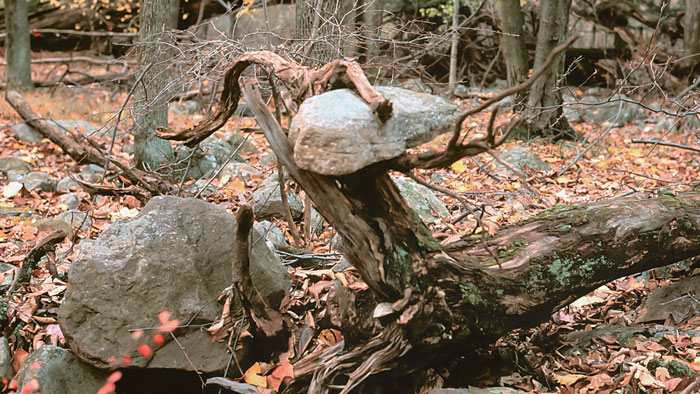
The Lackner Trail from this end is a fire road. An unusual, star-shaped dandelion grows by the gate, Jack-in-the-pulpits thrive and a brook sparkles on the left. I can see through the open, park-like woods and feel safe. We follow the stream to the pond and Dick says you never know what might be there. "Don't look for birds. Look for things that shouldn't be there--strange shapes, movement, a color that doesn't match with a shape, and that will generally direct you into a bird or a critter."
The Beaver Pond is a gathering place for wild critters, and the best time to see them is dawn or dusk. Today, tree swallows dart, red-winged blackbirds sing. Woodpeckers peck old dead trees. Up at the top, over the dark bracket fungi, the rectangular hole says "pileated woodpecker." It's Bird Haven. Wetlands surround the pond that dumps into a stream with a series of beaver dams and little rocky waterfalls. The beavers raised the water level of the pond by a few feet, and I can almost look up at it. It's a great place to sit quietly with binoculars and a bird book. "Beaver ponds and wet areas are where you can find all sorts of things. Some of the places are not marked on the maps. We could go around the pond and god knows what we'd find. There are all sorts of wildlife. We didn't see any bears, raccoons, skunks, mink, otter, weasel, porcupine. I've never seen a live porcupine in NJ, but I'm told that they're here." Dick advises that anyone coming in contact with copperheads, an endangered species, should leave them alone.
"I put my shotgun down in 1969 and got a Nikon camera. With film you can shoot and shoot and the animal's still alive and can be photographed another time. It's a very nice feeling and I'm not anti-hunting. If you're taking pictures, you're not doing anything to the property except leaving your footprints. All this momentum that we've had to gain open space, and now people are using it. It's a wonderful thing to be able to come into a place such as Stokes and just wander as we did this morning."
The Lackner is a great trail for people who have never been to Stokes. It has a variety of landscape and habitats where you could see any wildlife. It's a nice walk for people who have trouble walking.
Take Struble road on the west side of 206, through the hemlock and pine forest, past the Boy Scouts and 4-H camps, to the southwestern edge of the forest along Tillman Brook. Walk through regeneration of pines, down into the Hansel and Gretel evergreen forest. It's cool under the dark canopy, with few hardwoods. Walls of red shale and sandstone were cut by spring-fed Tillman Brook, which splashes and falls over wide sandstone steps. "You can take off your clothes and just sit in the bathtub, during the hottest days. You can sit in there till you get cold then come out," says Len of the pothole created by the whirling action of the stream. Native rhododendrons line the ravine all along the rocky way. Follow the red blaze, accompanied by the soft sound of waterfalls, along the brook to the road, the boundary of Stokes. Across the road is an old cemetery. Be ready to cross the brook and step over logs. Tillman Ravine is designated to the Natural Areas System for its forest, geological features, and endangered wildlife and plants. The 525-acre ravine is moist, green, shady and cool on a hot summer's day.
For more information call the Stokes State Forest office at (973) 948-3820 or check the NJ Division Parks & Forestry page.
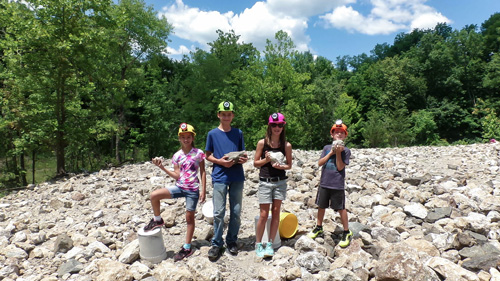
“The Fluorescent Mineral Capitol of the World" Fluorescent, local & worldwide minerals, fossils, artifacts, two-level mine replica.
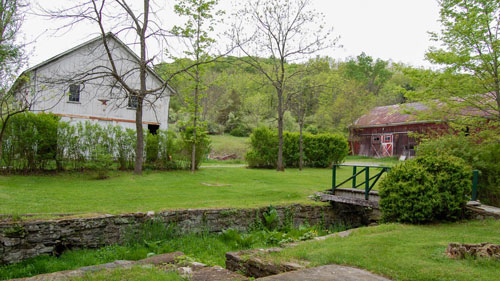
Peters Valley shares the experience of the American Craft Movement with interactive learning through a series of workshops. A shop and gallery showcases the contemporary craft of residents and other talented artists at the Crafts Center... ceramics, glass, jewelry, wood and more in a beautiful natural setting. Open year round.
Follow the tiny but mighty Wallkill River on its 88.3-mile journey north through eastern Sussex County into New York State.
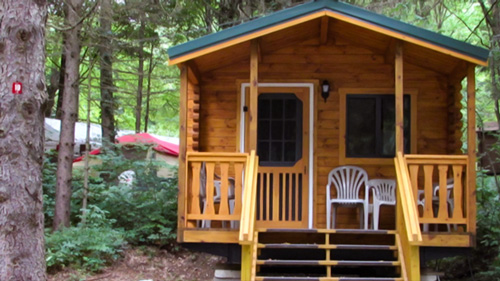
Located in Sussex County near the Kittatinny Mountains the camping resort offers park model, cabin and luxury tent rentals as well as trailer or tent campsites with water, electric and cable TV hookups on 200 scenic acres.